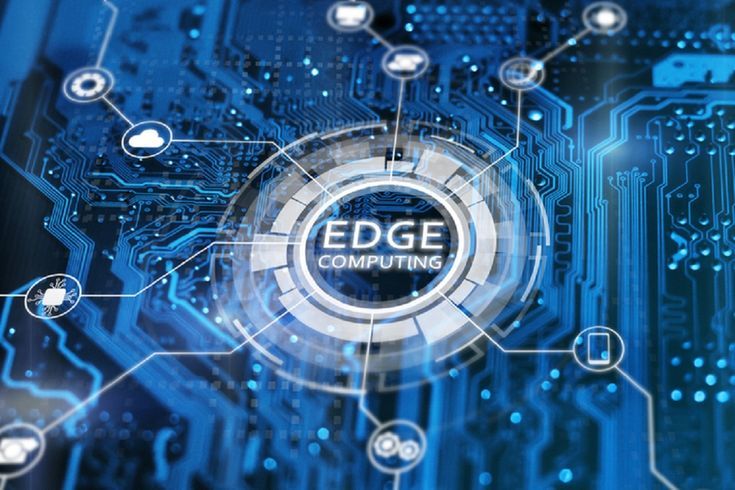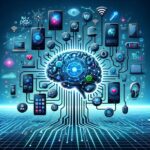Edge Computing and IoT: Paving the Way for a Smarter Future in 2025
Edge Computing and IoT: In recent years, Edge Computing and the Internet of Things (IoT) have emerged as groundbreaking technologies that are set to transform industries and daily lives. Together, these two technologies enable a new wave of connected devices and real-time data processing, creating more efficient and intelligent systems. As we move into 2025, the edge computing and IoT ecosystem is expanding rapidly, revolutionizing industries such as healthcare, manufacturing, smart cities, agriculture, and transportation.
In this article, we explore the synergy between Edge Computing and IoT, highlighting how their integration is reshaping the digital landscape, improving efficiency, and delivering innovative solutions to complex problems.
What is Edge Computing?
Edge computing refers to the practice of processing data near the source of its generation—such as smart devices, sensors, or IoT-enabled systems—instead of relying on distant cloud servers for computing power. This distributed architecture allows for faster data processing, lower latency, and reduced network congestion, as decisions are made at the “edge” of the network, closer to where data is being generated.
- Key Benefits of Edge Computing:
- Reduced Latency: By processing data closer to the source, edge computing minimizes the delay between data generation and its analysis, resulting in real-time decision-making.
- Improved Bandwidth Efficiency: Local processing reduces the need to send large volumes of data to the cloud, optimizing bandwidth usage and reducing costs.
- Enhanced Privacy and Security: With data processed on-site or near the source, sensitive information doesn’t need to be transmitted to distant data centers, improving security and compliance.
What is the Internet of Things (IoT)?
The Internet of Things (IoT) refers to the growing network of smart devices and objects that are interconnected and capable of collecting, sharing, and exchanging data. These devices range from wearables and smart home appliances to industrial machines and healthcare devices. The goal of IoT is to create a smart ecosystem where devices can communicate autonomously to improve efficiency, reduce costs, and enhance user experience.
- Key Benefits of IoT:
- Automation and Control: IoT devices can automate tasks, from controlling home temperature to monitoring machinery performance, reducing the need for human intervention.
- Data Insights: IoT devices generate massive amounts of data that can be analyzed to gain insights into consumer behavior, operational efficiency, and more.
- Real-Time Monitoring: IoT enables real-time monitoring of assets, allowing businesses to track conditions and make adjustments on the fly, improving decision-making.
How Edge Computing and IoT Work Together
Edge Computing and IoT complement each other perfectly, with edge computing providing the infrastructure needed to process and analyze the massive amount of data generated by IoT devices.
- Real-Time Data Processing: IoT devices collect data continuously, but to make quick decisions, this data needs to be processed instantly. Edge computing solves this by processing data locally, enabling real-time insights and instant action without the delays of sending data to the cloud.
- Reduced Latency for Critical Applications: In applications where every millisecond counts, such as in autonomous vehicles or industrial automation, edge computing is crucial. It ensures that IoT devices can respond quickly to changes in their environment without being hindered by cloud processing delays.
- Efficient Use of Bandwidth: With IoT devices transmitting large volumes of data, edge computing helps manage the data load by filtering and processing it locally, sending only relevant information to the cloud. This reduces the strain on network bandwidth, making the system more efficient.
Impact of Edge Computing and IoT on Various Industries
1. Smart Cities
In smart cities, the integration of IoT devices such as sensors, traffic lights, street cameras, and environmental monitors helps improve public services and enhance quality of life. Edge computing enables real-time monitoring of city infrastructure and services, providing insights into traffic flow, pollution levels, and energy consumption, which can be used to optimize resources and enhance safety.
- Example: Smart traffic management systems use real-time data from traffic sensors and cameras to adjust signal timings and reduce congestion, improving overall traffic flow and reducing emissions.
2. Healthcare
Edge computing and IoT are also making significant strides in the healthcare industry, where real-time data processing and monitoring can be critical to patient care. Wearable devices such as smartwatches, health monitors, and sensor-equipped medical equipment collect vital health data and transmit it to nearby edge devices for processing, providing instant feedback and alerting healthcare professionals to any potential issues.
- Example: Remote patient monitoring enables doctors to track heart rate, blood pressure, and oxygen levels in real time, allowing for early intervention in case of any abnormalities.
3. Manufacturing
In smart factories, IoT devices collect data from various production equipment, such as machine sensors and quality control systems, to monitor production efficiency and detect potential maintenance issues. Edge computing enables real-time decision-making, allowing manufacturers to reduce downtime, optimize workflows, and enhance overall productivity.
- Example: Predictive maintenance systems use IoT sensors to monitor machine health and edge computing to process data locally, predicting when equipment will require maintenance before it breaks down, reducing downtime and maintenance costs.
4. Agriculture
The agricultural sector is benefiting from the combination of edge computing and IoT by enabling precision farming. IoT devices, such as soil moisture sensors, temperature monitors, and drones, collect data on crop health and environmental conditions, which is processed at the edge for real-time decision-making. This helps farmers optimize water usage, reduce pesticide consumption, and increase crop yield.
- Example: Automated irrigation systems use IoT sensors to monitor soil moisture levels and trigger irrigation based on real-time data, ensuring water is used efficiently and crops receive the necessary hydration.
5. Transportation
In the transportation industry, edge computing and IoT are used to optimize fleet management, reduce accidents, and improve the efficiency of logistics operations. Connected vehicles with IoT sensors can process data at the edge to make real-time driving decisions, such as adjusting speed and braking, based on road conditions and traffic flow.
- Example: Autonomous vehicles use IoT sensors to collect real-time data on their surroundings, while edge computing enables the vehicle to process that data immediately, allowing for safe navigation and quick decision-making without delays.
Challenges and Considerations
While edge computing and IoT hold immense potential, their integration comes with several challenges:
- Security and Privacy: With more devices generating and processing sensitive data, ensuring secure communication between IoT devices and edge devices is critical to preventing cyberattacks and protecting user privacy.
- Scalability: As the number of IoT devices grows, edge computing infrastructure needs to be scalable to handle the increasing volume of data. Managing and maintaining edge devices across large deployments can be challenging.
- Interoperability: IoT devices from different manufacturers may not always communicate seamlessly. Ensuring interoperability between different systems and standards is essential for creating effective IoT ecosystems.
The Future of Edge Computing and IoT
As we move into 2025, the integration of edge computing and IoT will continue to evolve, enabling more efficient, intelligent, and autonomous systems. Innovations in 5G, artificial intelligence, and machine learning will further enhance the capabilities of these technologies, allowing for even more real-time insights, advanced automation, and intelligent decision-making.
Together, edge computing and IoT are setting the stage for a smarter, more connected world, where devices communicate autonomously to create efficient systems that improve everything from healthcare to transportation to energy management. Their combined impact will undoubtedly drive the future of technology, making our world more connected, automated, and innovative than ever before.
Conclusion
Edge computing and IoT are two of the most influential technologies shaping the future of various industries in 2025. By enabling real-time data processing and creating a more connected environment, these technologies are transforming sectors such as smart cities, healthcare, manufacturing, and agriculture. As these innovations continue to evolve, they will drive greater efficiency, productivity, and automation, making our lives and industries smarter and more sustainable.










